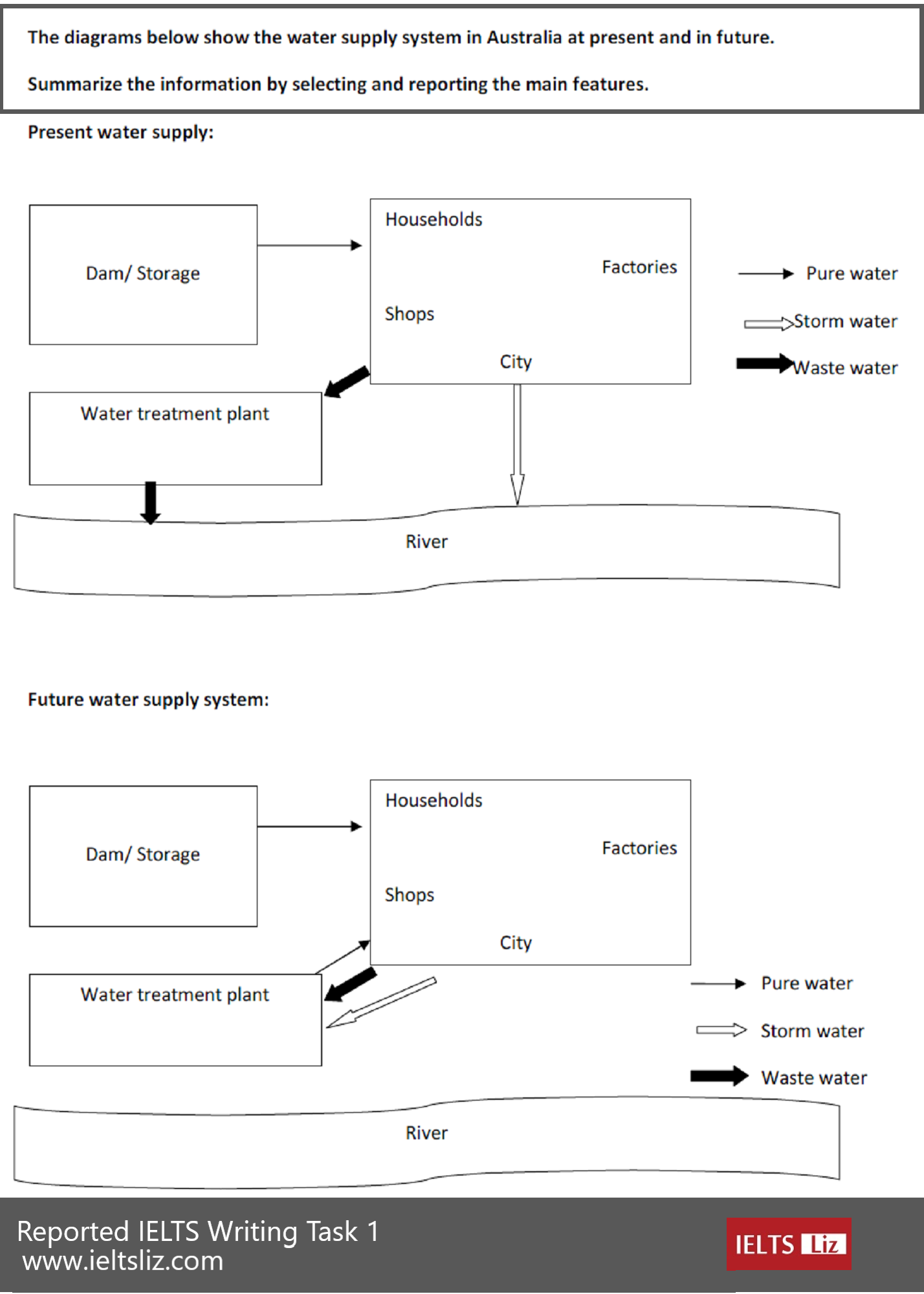The IELTS diagram below shows two diagram processes in two different time periods – present and future. The diagram was reported in the test twice and will likely appear again as IELTS do recycle writing tasks. This is also known as an IELTS Process.
For diagrams, you must pay attention to key stages of the process. All IELTS writing task1 reports will have an overview and this includes diagrams. The overview is the key paragraph and must summarise the key stages but without writing a list. See the model answer below to learn about this.
IELTS Diagram Process: Water Supply Systems
Below you will find a band score 9 model answer for an IELTS Diagram/Process.
IELTS Diagram Model Answer
Note: When you read the model answer below, pay attention to the different tenses used. See if you can spot the future passive voice.
The diagram illustrates the way the water supply system currently works in Australia and how the system will be changed in the future.
Overall, although both systems use the dam as a water supply, the present system returns both storm and waste water directly or indirectly to the river, whereas the future system plans to recycle both forms of water.
The current water supply system shows that water is stored in a dam before being transferred to a city to be used by households, shops and factories. From the city, storm water is directed straight into the river, by contrast waste water is sent to a water treatment plant to be processed. After the waste water is treated, it is safe to be released into the river.
Regarding the future water supply system, water will be brought from the dam for the same uses as in the present. However, both the storm water and waste water from the city are to be directed to the water treatment plant for processing after which they will both be recycled for use in the city. It is planned that no water will be released back into the river.
195 words
Three Key Points:
- The introduction provides a paraphrase of the rubric given. It is a short, functional paragraph.
- The overview summarises the diagram without getting lost in detail and without forming a list of stages. The overview is sufficiently developed for a high score.
- The body paragraphs are well organised with flexible linking which allows for accurate, complex sentence structures as well as a logical order of information. Tenses are used flexibly to show present and future information. As with most diagrams, the passive voice is used alongside the active voice. Vocabulary and collocations are used with accuracy and flexibility.













